#it’s a flatback sea turtle
Explore tagged Tumblr posts
Note
Your blog is what happens when you dump the contents of a comic book store, a bunch of really bad puns, and a pride parade into a punch bowl and serve it to a party full of screaming, hyperactive kids who just ate all of their Halloween candy in one sitting. 😁😂 (That was a compliment, bee tee dubs)
Thanks, that is very accurate 😂😂

Here, have a turtle. He is very polite
2 notes
·
View notes
Text
🐢Daily Sea Turtle Fact:🐢
Flatback Sea Turtle: The flatback sea turtle has the smallest range of the seven sea turtles. The species is endemic to the sandy beaches and shallow coastal waters of the Australian continental shelf and does not travel long distances in the open ocean for migrations like other sea turtles. This turtle gets its common name from the fact that its shell has a flattened or lower dome than the other sea turtles.


#flatback sea turtle#sea turtle#sea turtle fact#facts about sea turtles#daily sea turtle#daily sea turtle fact#marine reptile#respect the locals#marine animals#marine#marine biology#marine life#marine life blog#endangered species#ocean#ocean animal#ocean life#ocean life blog#marine life advocate#advocacy for marine life#turtle turtle#feelin turtley
37 notes
·
View notes
Text
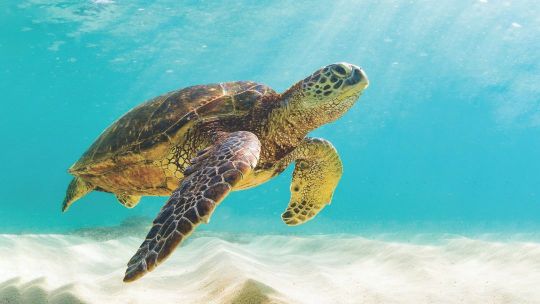

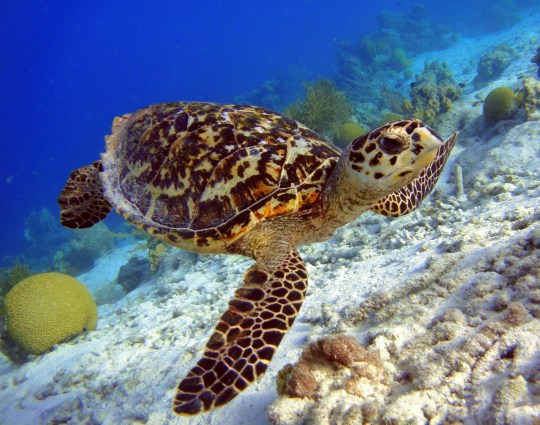

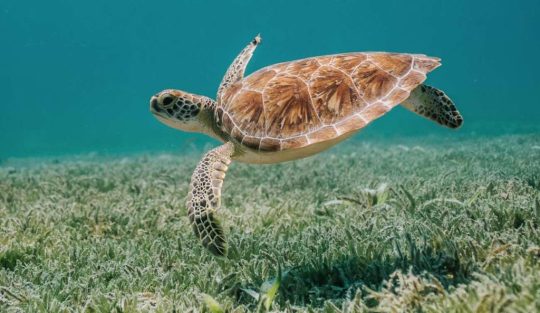

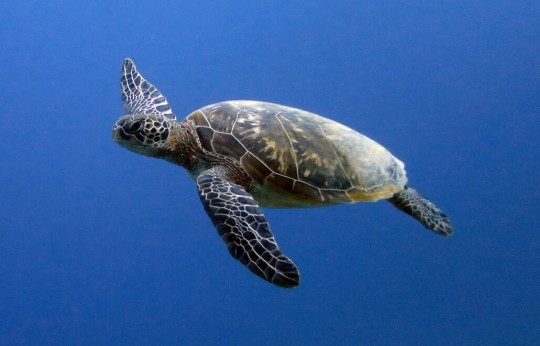
#turtle#sea turtle#marine turtle#testudines#poll#personally i am fond of the humble leatherback...but i love flatbacks too
54 notes
·
View notes
Text



Second turtle is Donnie! He was actually the "first" one. I focused on his design while working out how I wanted to create flippers. I wanted their feet to have a flipper like appearance, but at the same time it throws me if they don't have 'two toes' so I was trying to work out how his normal feet would 'fit' in a flipper. I chose a Green Sea turtle because of the color scheme and I like the almost square design to the spots and markings on the babies. Which then lead to my choosing Flatback for Leo. The two turtles are vastly different, but I find it interesting that their shells have nearly identical shape/design. I thought that would fit the "twin" theme for them. (Again, Creature or Gill-Man was a huge influence in this, but I don't need to show you refs of him again.)
352 notes
·
View notes
Text
Google Emoji Kitchen Sea Life 1/2









2/2 Here!
There are 7 varieties of Sea Turtle, which are the Green, Flatback, Hawksbill, Kemp's Ridley, Leatherback, Loggerhead and Olive Ridley.
The Green Sea Turtle is also called the Black Turtle. Which is about as confusing as the Red/Blueback Salmon. If they reach adulthood, they can live for up to 90 years!
They are both Endangered and protected as turtles and their eggs are hunted for food. They're also caught in nets. Poor things.

#agere#sfw agere#age regression#sfw age regression#agere blog#boy regressor#boyre#agedre#sfw agedre#fish#google emoji kitchen
22 notes
·
View notes
Text
meet the Teenage Mutant Sea Turtles!!!

Leo - 17, leatherback sea turtle, 7’2”
Mikey - 15 (older), loggerhead sea turtle, 4’7”
Donnie - 15 (younger), flatback sea turtle, 4’3”
Raph - 13, hawksbill sea turtle, 4’0”
6 notes
·
View notes
Text
I just finished this piece like a few minutes ago, and I wanted to share it since I've been recently getting into tmnt like a lot.
She is a flatback seaturtle, and when I was making her, I was heavily inspired by juliefofisss on deviantart and wanted to also make a mutant sea turtle. now I like it. I'm proud I finished it, but I don't see myself as a turtle, so I will be making another sona, so I'll be working on that.
No clothes:

Clothes:

2 notes
·
View notes
Text

Sea turtles (superfamily Chelonioidea), sometimes called marine turtles,[3] are reptiles of the order Testudines and of the suborder Cryptodira. The seven existing species of sea turtles are the flatback, green, hawksbill, leatherback, loggerhead, Kemp's ridley, and olive ridley.[4][5] Six of the seven sea turtle species, all but the flatback, are present in U.S. waters, and are
2 notes
·
View notes
Text
Snow's Sea Turtle Mer Facts
When I have enough spoons I'll do this again but with graphics! My school is just kicking my ass so I need to have some free time. So instead I'll do my best to describe how things look to my best ability!
So without further ado here is my facts on Turtle Mer how the work, and bless @emry-stars-art, @ca-van, @jtl-fics, and @chellseed for listening to me rant and ramble as I figured everything out. Y'all are angels I sware.
The most important thing to note about these type of mer is that they often follow the same rules as the sea turtles they resemble and thus are named for the sea turtles they resemble. The sizes of these mer are heavily dependent on which species they resemble as well. The shells of these mer are nearly identical to the size of the turtle. The shell's of the adult mer are only a bit bigger (roughly 1ft or 30.48cm bigger) while the hatchling shell's are about the same size of the hatchling turtles.
These mer are often highly studied as the human part of their body doesn't necessarily match the sex of their turtle half. That is all determined, just like in turtles, by the temperature of the sand in which the the eggs are nested in. If a mer's eggs incubate below 27.7° Celsius (81.86° Fahrenheit), the hatchlings will be male. If the eggs incubate above 31° Celsius (88.8° Fahrenheit), however, the hatchlings will be female. Yet temperature doesn't effect the human portion of the mer's sex. Such a mer that presents as a human female could in fact have the reproductive organs of a male turtle and vice versa. These mer eggs take about 60 days to incubate and hatch.
Sea turtle hatchlings may often look weird to people who happen to witness them hatch. At first look they look like baby turtles without heads but at close inspection you'll notice that the human part of the mer is nested inside their shell. As these hatchlings grow the human part will slowly emerge giving stability to the young mer's head as the strength grows and develops. These mer will take 10 to 50 years to fully mature.
These are the species of mer that we know of today and their sizes;
Kemp's Ridley Mer measure 6 ft (182.88 cm) in length and weigh up to 208.1 lbs (94.4 kg) as adults and their hatchlings measure approximately 0.98 in (25mm) long and weigh an average 0.62 oz (17.58 g).
Olive Ridley Mer measure 7 ft (213.36 cm) in length and weigh up to 277 lbs (125.65 kg) as adults and their hatchlings measure approximately 1.9 in (17.78 cm) and weigh an average of 1 oz (28.35 g).
Hawksbill Mer measure 8ft (243.84 cm) in length and weigh up to 356.9 lbs (161.9 kg) as adults and their hatchlings measure 3 in (7.62 cm) and weigh an average of 3 oz (85.05 g).
Flatback Mer measure 8.4ft (259.08 cm) in length and weigh up to 451.93 lbs (204.99 kg) as adults and their hatchlings measure 3 in (7.62 cm) and weigh an average of 3.4 oz (96.39 g).
Loggerhead Mer measure 9.2ft (280.42 cm) in length and weigh up to 553.3 lbs (251.88 kg) as adults and their hatchlings measure in 4 in (10.16 cm) and weigh an average of 4.2 oz (119.07 g).
Green Turtle Mer measure 11 ft (335.28 cm) in length and weigh up to 765 lbs (347 kg) as adults and their hatchlings measure 5.4 in (13.72 cm) and weigh an average of 5.3 oz (150.25 g).
Leatherback Mer measure 14ft (426.72 cm) in length and weigh up to 1550 lbs (703.07 kg) as adults and their hatchlings measure 8 in (20.32 cm) and weigh an average of 7 oz (198.45 g).
Archelon Mer Extinct -- Skeletal remains hint at this mer once existing but there hasn't been any documented evidence of these mer existing today. This mer is said to of measured 28 ft (853.44 cm) in length but scientists have not yet been able to calculate just how much these colossal mer would weigh. However it can be estimated that they would most likely weigh twice as the Leatherback mer, 3100 lbs (1406.14 kg). Unfortunately no fossils of Archelon hatchlings have been discovered which could be a testament to the ancient mer hatchlings having much better survival rate then today's mer or that the fossils are located in the deep sea which we have not discovered yet.
Sea Turtle Mer have the same nesting habits of their turtle counter parts. They all come up on the beach at once and nest in groups and they all nest at the same beach from when they hatched. These mer lay anywhere from 100 120 eggs and statistically only 1 of those hatchlings will make it to maturity. These hatchling mer face predators such as raccoons, crabs and ants raid eggs and hatchlings still in the nest. Once they emerge, hatchlings make bite-sized meals for birds, crabs and a host of predators in the ocean. After reaching adulthood, sea turtles are relatively immune to predation, except for the occasional shark attack.
These natural attacks are not the reason why these mer have plummeted towards extinction. That responsibility goes to the actions of humans. From poaching for their meat and shells, predatory commercial fishing entangling these mer, to humans encroaching on their habitats, to artificial lighting affecting hatchings, humans are the main reason for this mer's rapid declining numbers.
That doesn't mean that their haven't been actions taken to protect these mer. Multiple organizations and rescues have done rehabilitation measures for these mer but as much as these mer are getting help they are being hurt twice as much and some mer have been deemed to only be able to thrive in captivity.
#sea turtle mer#mer facts#mer au#sea turtle mer facts 1.0#all for the game mer au#aftg mer au#sea turtle seth gordon#i felt the need to share the lore and facts#tis my duty to share the information to the masses#i got brain worms thinking about what type of mer the gordons would be and now I have this
6 notes
·
View notes
Text
Name: Vr. Mell Baines Color: Seashell #Fff5ee Symbol: rice Strife Specibus: shovelkind Handle: traumaticAnomaly Animal: zander Pronouns: zie/zir/zirs/zirself Age: 93 Birthday: 85th day of the year Sexuality: queer Interests: herp keeping and knot tying Dream Moon: prospit Classpect: Bard of Space Land: Land of Sun and Soul, a cruel place, with filthy Flatback Sea Turtle consorts. It is a place full of warring factions and migrating dunes. Iapetus knows contentment. Instrument: manzello via homestuck-human-generator https://ift.tt/5U4jzHf
2 notes
·
View notes
Text
This photo is fake, or at least the turtle part of it is. Only Leatherbacks grow to that size, but the head and front flippers are a Green Sea Turtle, the shell is not right for either species (it's closer to a Flatback which doesn't grow this large and is only found in Australian waters), she should have a clearly visible tail, leave an obvious trail on the sand, and no sea turtles have back legs that look like tortoises, they all have flippers.
Also, they only leave the water at night to nest, so unless she was sick / injured or at one of a handful of mass nesting sites (of which this beach is not one) she would not be on the beach in the middle of the day.
Furthermore, if she WAS real, this wouldn't be a cute meet. Having her route back to the sea blocked by a herd of large animals would be incredibly stressful for a turtle that would already have been stressed and exhausted after laying eggs and being out of the water during the day.
I didn't need to look up this image to know it was fake, but I did, and a quick google suggested it was the work of a digital artist. Nevertheless, it has been shared as real across multiple social media platforms.
If you'd never seen a sea turtle or didn't know much about them, I can see how easy it would be to assume this was real. It wouldn't ring the alarm bells it did for me. But with the increasingly widespread availability of image manipulation and AI programs, it would be wise to approach astonishing images with scepticism.
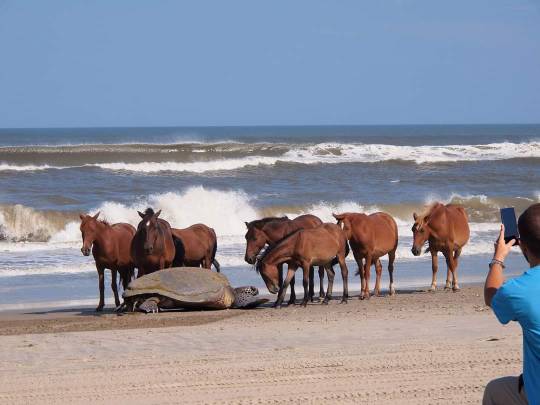
Meeting of the Minds in the Outer Banks.
25K notes
·
View notes
Text
Your Guide to Swimming with Turtles This Season
Australia offers some of the most breathtaking marine experiences in the world, and one of the most magical among them is the chance to swim with turtles. From the Great Barrier Reef to secluded bays along the Western Australian coast, encountering these gentle creatures in their natural habitat is an unforgettable adventure. Whether you are a seasoned diver or a casual snorkeller, this guide covers everything you need to know to make the most of this bucket-list activity during the current season.

Why Australia is the Perfect Place to Swim with Turtles
Australia's extensive and diverse marine ecosystems are home to six of the world's seven sea turtle species. The country's warm waters, protected reefs, and conservation areas provide ideal conditions to swim with turtles responsibly and respectfully. From the east coast to the west, these slow-moving, serene animals can often be spotted gliding gracefully through coral gardens and seagrass beds.
Popular species found in Australian waters include the green sea turtle, hawksbill turtle, loggerhead turtle, and flatback turtle. These species frequent coastal areas during nesting and feeding seasons, creating incredible opportunities for close encounters.
Best Locations in Australia to Swim with Turtles
1. Great Barrier Reef, Queensland One of the most iconic places to swim with turtles, the Great Barrier Reef is a UNESCO World Heritage site and a hotspot for marine biodiversity. Locations such as Lady Elliot Island, Fitzroy Island, and Green Island offer clear waters, accessible reefs, and high turtle sighting rates.
2. Ningaloo Reef, Western Australia This fringing reef near Exmouth is another top destination to swim with turtles. Ningaloo is less crowded than the east coast reefs and provides a more intimate wildlife experience. Between March and July, turtle sightings are particularly frequent as they come close to shore.
3. Mon Repos, Queensland Mon Repos is not only an important nesting site for loggerhead turtles but also a great spot to observe these majestic creatures in their natural environment. While swimming activities are more regulated during nesting season, nearby waters are ideal for responsible snorkelling.
4. Lord Howe Island, New South Wales This remote island paradise features pristine lagoons and vibrant coral reefs. It's one of the lesser-known but equally rewarding places to swim with turtles in Australia.
Best Time of Year for Turtle Encounters
In Australia, the best time to swim with turtles generally aligns with the warmer months from November to April. During this time, sea temperatures are ideal, and many turtles come closer to shore for feeding and nesting. Early morning or late afternoon swims typically yield higher chances of sightings, as turtles are more active and visibility is often better.
However, each region may vary slightly depending on weather patterns and breeding cycles, so checking with local marine parks or visitor centres before planning a trip is recommended.
What to Expect When Swimming with Turtles
Swimming alongside turtles is a serene and awe-inspiring experience. Most turtles are calm and unbothered by human presence as long as they are not disturbed. Snorkelling tours or guided diving experiences often include a short briefing on turtle behaviour and how to interact without disrupting their natural patterns.
Expect to see turtles grazing on seagrass, resting on the seabed, or surfacing for air. Always maintain a respectful distance—at least two metres—and never attempt to touch or chase them. This ensures both your safety and the wellbeing of the turtles.
Tips for a Safe and Respectful Experience
Choose eco-certified tour operators that prioritise conservation and follow marine wildlife interaction guidelines.
Avoid touching or feeding turtles. Human contact can cause stress or illness in marine animals.
Use reef-safe sunscreen to minimise chemical pollution in sensitive reef ecosystems.
Practice good buoyancy to avoid accidentally damaging coral or marine habitats.
Stay calm and quiet in the water to increase your chances of prolonged encounters.
Conservation Matters: Protecting Marine Turtles
While it’s a privilege to swim with turtles, it also comes with a responsibility to protect their environment. Many turtle species in Australia are threatened due to pollution, climate change, habitat destruction, and boat strikes.
Participating in marine conservation efforts, supporting sustainable tourism, and spreading awareness contribute to the protection of these ancient mariners. By respecting marine life and adhering to best practices, swimmers can ensure these experiences remain available for future generations.
Final Thoughts
For travellers seeking an enriching marine experience, few activities rival the opportunity to swim with turtles in Australia. Whether exploring the coral gardens of the Great Barrier Reef or the quiet waters of Ningaloo, each encounter offers a deeper connection to nature and a renewed sense of wonder.
Plan carefully, follow responsible wildlife interaction practices, and prepare to be amazed by one of the ocean’s most graceful inhabitants. This season is the perfect time to dive in and create unforgettable memories with Australia's sea turtles.
0 notes
Text
What Types of Turtles Are Commonly Spotted on Gold Coast Tours?
The Gold Coast, a popular destination in Australia, is renowned for its stunning beaches, crystal-clear waters, and abundant marine life. Among the many remarkable creatures that inhabit the region's waters, turtles hold a special place. Turtle tours Gold Coast offer an unforgettable experience for nature lovers and wildlife enthusiasts alike. These tours allow visitors to get up close with the magnificent sea turtles that frequent the area's coastlines. In this article, we will explore the different species of turtles commonly spotted during Gold Coast turtle tours and highlight why these tours are a must-do for anyone visiting the region.

Types of Turtles Found on Gold Coast Tours
Gold Coast is home to several species of sea turtles, each with its unique characteristics and behavior. The waters around the Gold Coast provide an ideal habitat for these ancient mariners. Whether you're on a snorkeling tour or a boat excursion, you're likely to encounter one of the following species:
1. Green Sea Turtle (Chelonia mydas)
The Green Sea Turtle is perhaps the most commonly spotted species during turtle tours Gold Coast. Known for their large, round shells and olive-green coloration, these turtles are typically found in shallow waters near coral reefs, seagrass meadows, and sandy beaches. They are herbivores, feeding primarily on seagrasses and algae, which gives them their distinctive greenish color.
Green Sea Turtles are migratory creatures, traveling long distances to lay their eggs on the same beaches where they were born. On Gold Coast tours, visitors often have the chance to see them swimming gracefully through the water or basking on the sandy shores. These turtles are known for their peaceful nature, making them a favorite among those on turtle tours Gold Coast.
2. Loggerhead Sea Turtle (Caretta caretta)
Loggerhead Sea Turtles are another species commonly encountered during turtle tours Gold Coast. These turtles are known for their large heads and strong jaws, which they use to crush hard-shelled prey such as crabs and mollusks. Their shells are typically reddish-brown, and their size can reach up to 1 meter in length.
Loggerhead turtles are often seen in deeper waters, although they occasionally venture into shallower areas. Their migrations can cover vast distances, and the Gold Coast is part of their migratory path. While they are less likely to be seen basking on beaches compared to the Green Sea Turtle, their presence in the region is a highlight for many wildlife enthusiasts.
3. Hawksbill Sea Turtle (Eretmochelys imbricata)
The Hawksbill Sea Turtle is one of the more striking species found in the waters of the Gold Coast. With their narrow, pointed beaks and beautiful, patterned shells, Hawksbill turtles are easily recognizable. These turtles are often associated with coral reefs, where they feed on sponges and other invertebrates.
Though they are less commonly seen than Green Sea Turtles or Loggerheads, Hawksbill turtles still make appearances on turtle tours Gold Coast. Their rarity only adds to the excitement of spotting one of these remarkable creatures. Hawksbill turtles are critically endangered, making every sighting on a Gold Coast turtle tour an extraordinary opportunity to observe and appreciate these magnificent animals in their natural habitat.
4. Flatback Sea Turtle (Natator depressus)
The Flatback Sea Turtle is another species that can be found around the Gold Coast, although their sightings are relatively rare compared to the Green Sea Turtle. Named for their distinctive flat-shaped shells, these turtles are unique to the Australian region and are primarily found along the northern and central coasts.
Flatback turtles are mostly carnivorous, feeding on a variety of marine organisms such as jellyfish, crustaceans, and sea cucumbers. Their populations are concentrated in northern Australia, but they can occasionally be spotted on Gold Coast turtle tours, especially during nesting seasons. The Flatback Sea Turtle’s relatively small size and unique shell make it an exciting find for those lucky enough to witness it.
5. Leatherback Sea Turtle (Dermochelys coriacea)
The Leatherback Sea Turtle, the largest of all sea turtle species, is a rare but remarkable sight on Gold Coast turtle tours. Known for their leathery, soft shells and impressive size—often reaching lengths of over 2 meters—Leatherbacks are a true marvel of the ocean. They primarily feed on jellyfish, and their large bodies allow them to dive to great depths in search of food.
While Leatherbacks are not commonly found in the shallow waters of the Gold Coast, occasional sightings do occur, especially during their migratory season. Their immense size and unique appearance make them one of the most awe-inspiring creatures to spot on a turtle tour Gold Coast.
Why Turtle Tours Gold Coast Are So Popular
Turtle tours Gold Coast provide an unparalleled opportunity to connect with nature and experience marine life up close. The region's clear, warm waters make it an ideal environment for these ancient creatures to thrive. With a variety of turtle species to observe, each tour offers a unique experience, and visitors are often left in awe of the beauty and serenity of the marine ecosystem.
Whether you're snorkeling, diving, or simply taking a boat tour, the Gold Coast offers an excellent vantage point for spotting sea turtles in their natural habitat. The presence of coral reefs, seagrass beds, and sandy shores provides a rich environment for these turtles to feed, breed, and thrive. Many of the species, such as the Green Sea Turtle and Loggerhead Turtle, are regularly spotted during turtle tours Gold Coast, ensuring that every tour offers an exciting opportunity to witness these incredible creatures.
Additionally, Gold Coast turtle tours offer educational opportunities. Tour guides are often well-versed in the behavior, conservation efforts, and environmental importance of sea turtles, making these tours both enjoyable and informative.
Conservation of Turtles on the Gold Coast
While turtle tours Gold Coast are an exciting way to encounter these ancient creatures, it’s important to remember the importance of conservation. Several species of sea turtles are endangered, and their populations face threats from habitat loss, pollution, and illegal hunting. Responsible turtle watching practices are essential to ensure the protection of these magnificent animals.
Gold Coast turtle tours are often conducted with a focus on sustainability and environmental education. Many tour operators collaborate with local conservation organizations to support turtle preservation efforts and promote awareness about the challenges these creatures face.
Conclusion
Turtle tours Gold Coast provide a thrilling opportunity to witness some of the world's most beautiful and endangered creatures in their natural habitat. Whether it's the Green Sea Turtle's graceful swim, the Loggerhead’s powerful movements, or the rare sighting of a Leatherback, each tour offers a unique adventure. With a variety of species to encounter, these tours provide an unforgettable experience for anyone lucky enough to join in. For those passionate about marine life and conservation, Gold Coast turtle tours are not to be missed.
0 notes
Text



First up is Sea Turtle Leo!
I based him on the Flatback Sea Turtles, specifically the designs/colors that can be found on baby turtles (when their carapace scutes are a bit more distinct and look very similar to Green Sea Turtles - this will be important when I explain Donnie's design).
I wanted to keep as much of his silhouette the same as his original design, so he could look 'sea turtle' but still distinctly look like Leo. The small snippet from my mood board (second image) shows you two of the major references I used. The Creature and the baby Flatbacks. The third image is the first sketch I did of Donnie and Leo.
334 notes
·
View notes
Text
Name: Miss Niecul Folykl Ancestor: The Observer Strife Specibus: dartkind Blood Color and Sign: Indigo; Sagipia Handle: technoTactics Lusus: lizardmom Pronouns: zie/zim/zir/zirs/zirself Age: 26 sweeps Interests: action figure and gongoozling Sexuality: queer Class: Heir Land: Land of Growth and Satin, an obnoxious place, with panicky Flatback Sea Turtle consorts. It is a place full of a black desert and perfect forests. Hyperion seeks rest. Quirk: use \ instead of I via roll-a-troll https://ift.tt/MWjPGme, do as you please
1 note
·
View note
Photo



hatchling flatback sea turtle, Broome, Western Australia, by ally.photog
#sea creatures#australian flatback sea turtle#sea turtle#Broome#Western Australia#tropical#ocean#sea#beach#surf#travel#australia#nature#australian wildlife#wildlife#turtles
395 notes
·
View notes